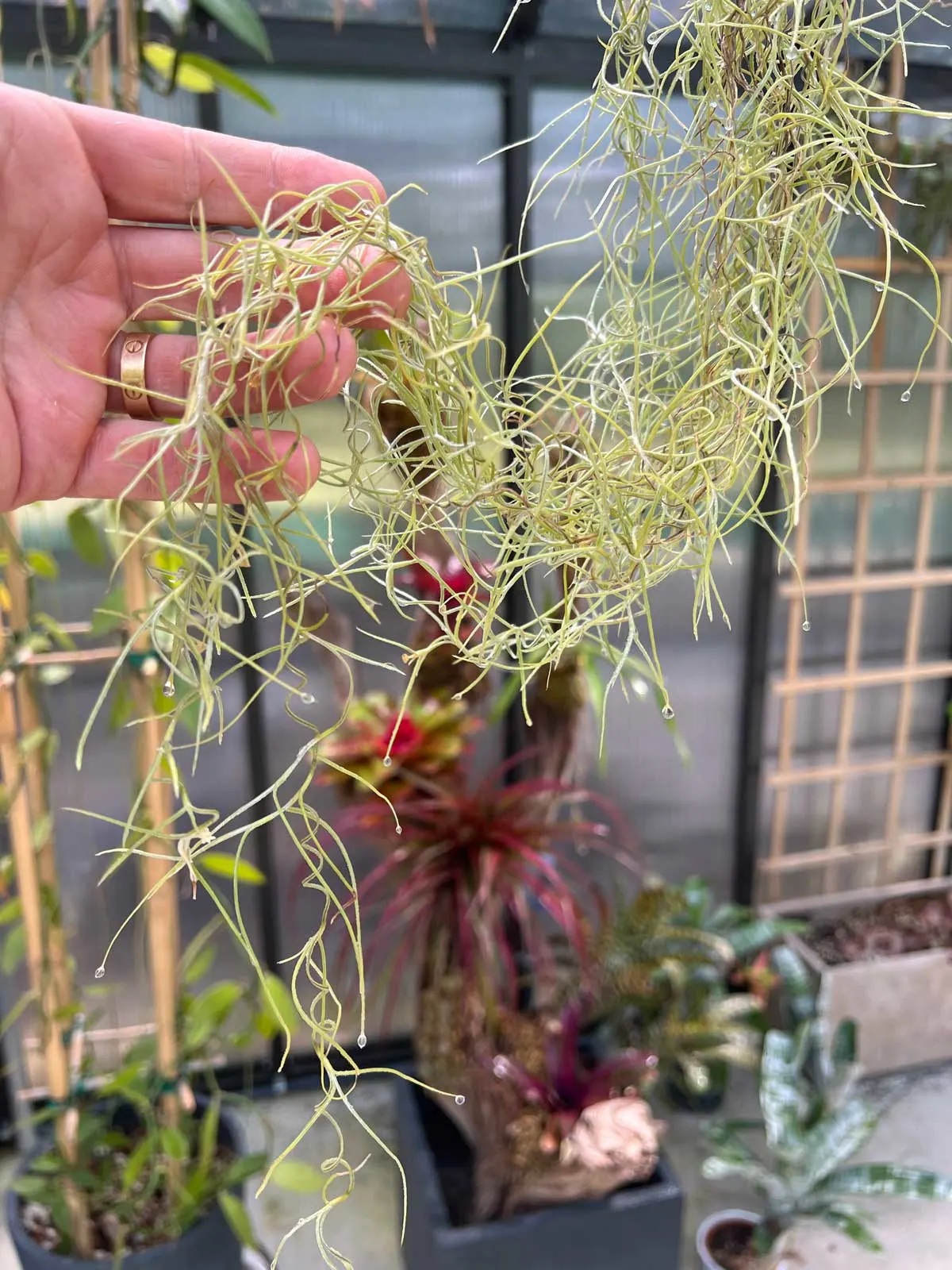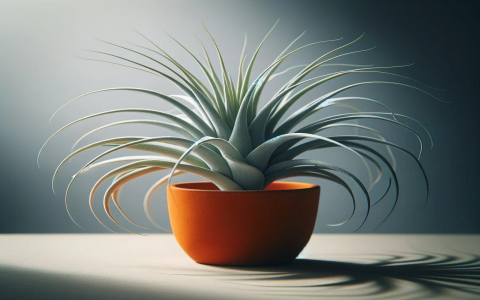Okay, so today I want to talk about how I take care of my Tillandsia usneoides, also known as Spanish moss. I’ve had this plant for a while now, and it’s been quite an interesting journey figuring out how to keep it happy.
When I first got my Spanish moss, I was a bit clueless. I read somewhere that it’s an air plant, so I thought, “Great, no soil needed, this should be easy!” But it turns out, these guys need a bit more attention than just being left alone in the air.

Watering: This is where I messed up initially. I thought a light misting once in a while would do the trick, but boy, was I wrong! These plants love water, but they don’t want to sit in it. What I do now is give them a good dunk in a bucket of water. I literally submerge the whole plant for about 30 minutes to an hour. I try to use rainwater whenever I can because tap water can sometimes have too many minerals that aren’t great for the plant. After their bath, I gently shake off the excess water and hang them up to dry.
Drying: This part is crucial. After watering, it’s super important to let the Spanish moss dry completely. I hang mine near a window where it gets good airflow. You don’t want it to stay wet for too long, or it can start to rot. It usually takes a few hours for it to dry out properly.
Light: Now, about lighting, these plants are not too picky, but they do need a good amount of light. I’ve noticed that they do best in bright, indirect light. I have mine hanging near a window that gets a lot of natural light, but not direct sunlight. I read somewhere that they naturally grow under the forest canopy, so they’re used to filtered light. So don’t put it under direct sunlight, and it could get scorched.
-
Here’s a quick rundown of my routine:
- Dunk the Spanish moss in water for about 30 minutes to an hour.
- Shake off excess water.
- Hang it in a well-ventilated area to dry completely.
- Place it near a window with bright, indirect light.
Other care tips:
Fertilizing: I fertilize them very occasionally, using a diluted bromeliad or air plant fertilizer. You can mix the fertilizer with the water when dunking.
Trimming: I sometimes trim off any brown or dead parts to keep the plant looking healthy and to encourage new growth.
Repotting: These air plants don’t need repotting.

Cutting: Spanish moss doesn’t need cutting, but you can trim it to keep it tidy.
And that’s pretty much it! It might sound like a lot, but once you get the hang of it, it’s not too bad. And seeing your Spanish moss thrive is so worth it! It’s like having a little piece of a lush forest right in your home. I’m really glad I didn’t give up on this plant, and I hope my experience helps you with yours!





















